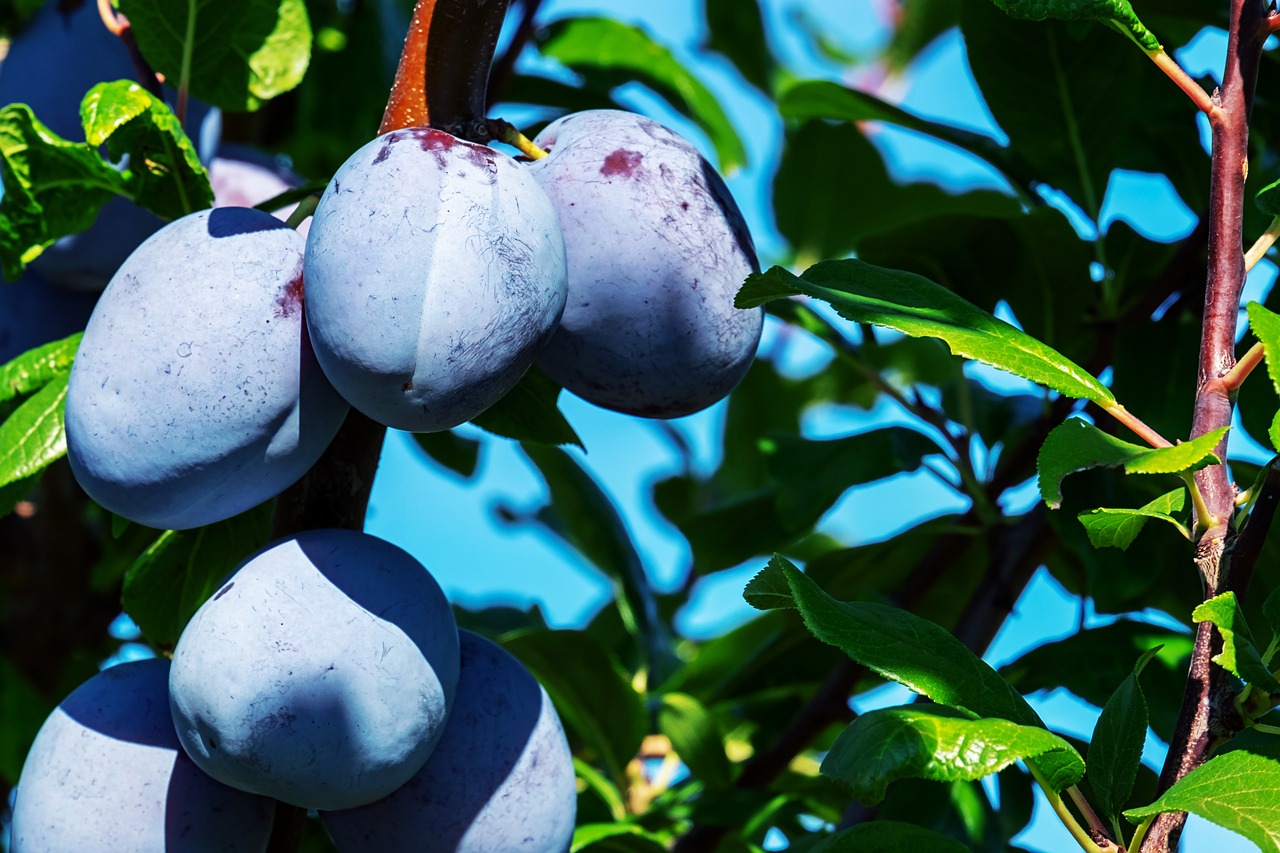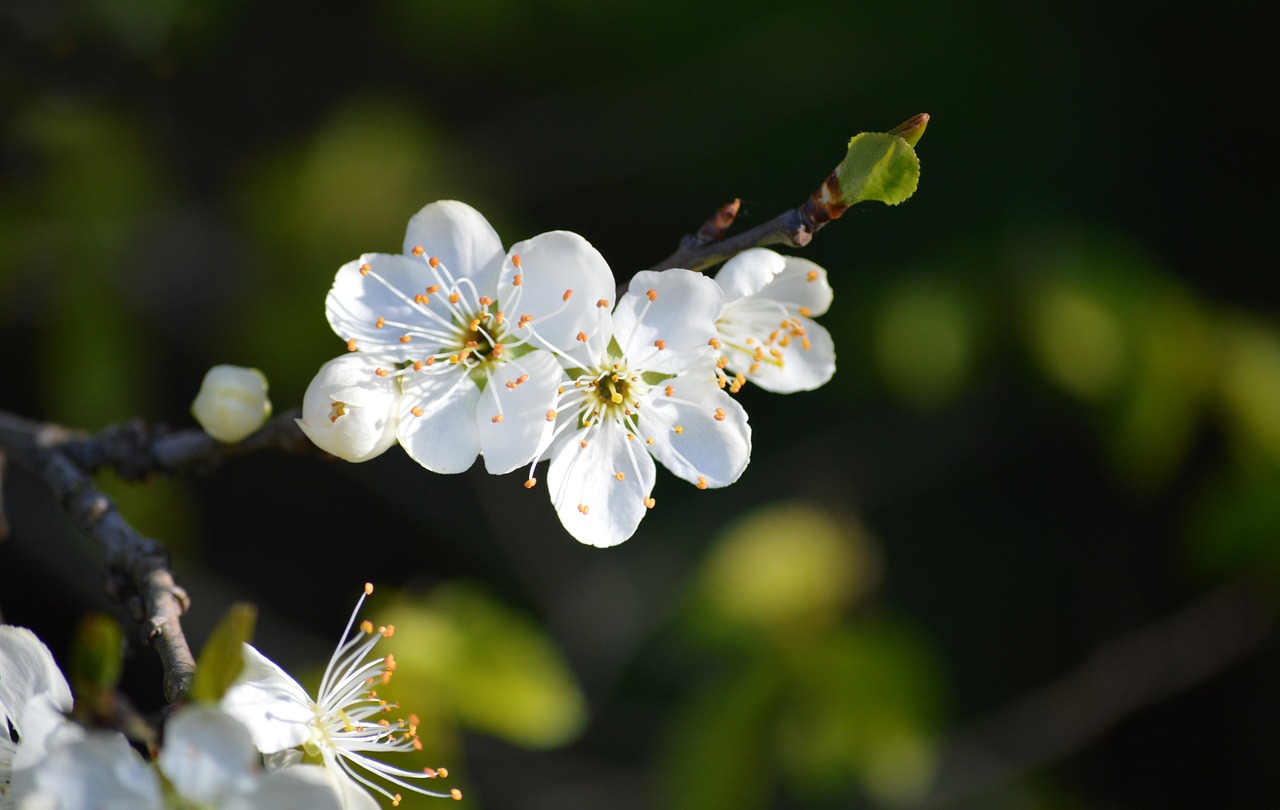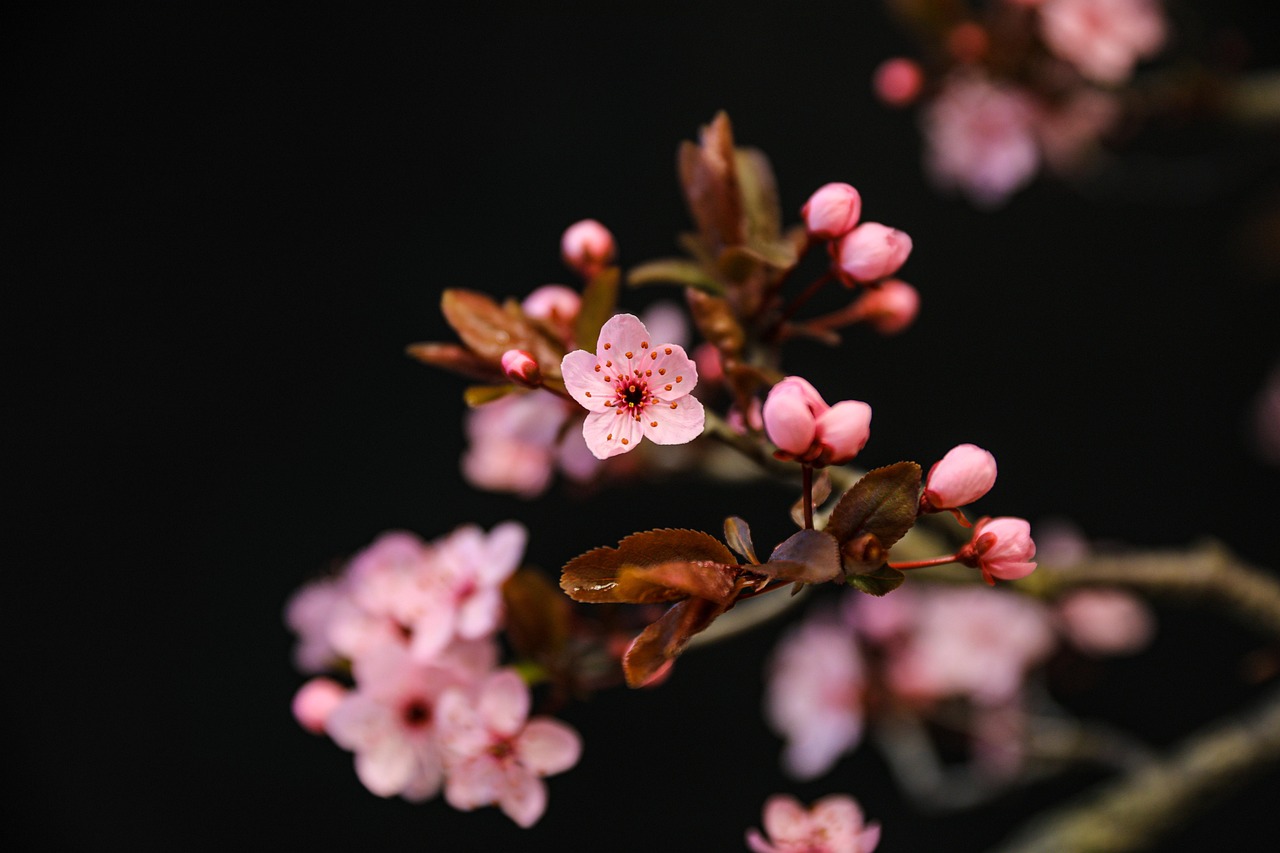Pruning Japanese plum trees in minimalist gardens involves selective cutting to maintain shape, improve air circulation, and enhance fruit production. This practice promotes healthier growth while adhering to the aesthetic principles of minimalism, allowing for a clean and organized garden design.
The Japanese plum tree, known for its beautiful blossoms and delicious fruit, is a popular choice for many gardeners. In minimalist gardens, where simplicity and functionality are key, pruning these trees becomes essential. Pruning not only helps maintain the tree’s health but also fits within the design philosophy of minimalism, which values clarity and purpose.

Minimalist gardening emphasizes the use of fewer plants, creating a clean and uncluttered landscape. Japanese plum trees can thrive in this environment, offering both beauty and utility. However, to maximize their potential, proper pruning techniques are necessary. Understanding the right time to prune and the methods to use can significantly impact the tree’s growth and fruit yield.
Understanding Japanese Plum Trees
Japanese plum trees belong to the genus Prunus and are known for their striking flowers and sweet fruits. They typically bloom in early spring, showcasing an array of vibrant colors that can enhance any garden space. Here are some key characteristics of Japanese plum trees:
| Characteristic | Description |
|---|---|
| Height | Can grow between 15 to 30 feet tall |
| Spread | Branches typically spread 15 to 25 feet wide |
| Flowers | White or pink blossoms that appear in spring |
| Fruit | Produces small to medium-sized plums with sweet flavor |
| Climate | Thrives in temperate climates with well-drained soil |
To ensure that your Japanese plum tree flourishes in a minimalist garden setting, it is important to understand its growth habits. These trees can be susceptible to various diseases and pests if not properly maintained. Regular pruning helps prevent these issues by promoting better air circulation and sunlight penetration.

Benefits of Pruning Japanese Plum Trees
Pruning offers several advantages for Japanese plum trees in minimalist gardens. Some significant benefits include:
- Improved Health: Regularly removing dead or diseased branches helps maintain a healthy tree.
- Increased Fruit Production: Pruning encourages better fruit set by allowing more sunlight to reach the fruiting branches.
- Aesthetic Appeal: A well-pruned tree contributes to the overall design and visual harmony of a minimalist garden.
- Controlled Growth: Pruning helps manage the tree’s size and shape, making it easier to fit within limited space.
Understanding when and how to prune is crucial for achieving these benefits. The best time to prune Japanese plum trees is during their dormant season, typically in late winter or early spring before new growth begins. This timing minimizes stress on the tree and allows for optimal recovery as it enters the growing season.
Essential Pruning Techniques
There are various techniques to consider when pruning Japanese plum trees. Each method serves a distinct purpose and should be applied according to the specific needs of your tree:

- Thinning: This technique involves removing entire branches from the base. It helps reduce overcrowding and allows more light to penetrate the canopy.
- Heading Back: Cutting back the tips of branches encourages bushier growth. This technique is useful for shaping the tree.
- Crown Reduction: This method reduces the overall height of the tree while maintaining its natural shape.
- Restorative Pruning: Used for older or neglected trees, this technique involves removing large sections of wood to rejuvenate the plant.
Each of these techniques requires precision and care. When pruning, always use clean, sharp tools to make clean cuts. This practice minimizes injury to the tree and helps prevent disease.
As you begin pruning your Japanese plum tree, remember that less is often more in a minimalist garden. Focus on creating an elegant silhouette while ensuring that the tree remains healthy and productive. Keeping the design simple allows the beauty of the plum tree to shine through without overwhelming the landscape.
Timing Your Pruning
The timing of pruning your Japanese plum tree is crucial for its overall health and productivity. Understanding when to prune can significantly affect your tree’s growth patterns and fruit production. The best time to prune is during the dormant season, which typically occurs in late winter or early spring.

Pruning during this period allows the tree to heal quickly as it enters the growing season. Here are some key points to consider regarding timing:
- Avoid Late Frost: Pruning too close to the frost date can expose fresh cuts to cold temperatures, which may harm the tree.
- Monitor Bud Development: Wait until the buds begin to swell but before they open to ensure you are not cutting off potential blossoms.
- Annual Maintenance: Regular annual pruning helps establish a routine that keeps your tree healthy and productive.
Seasonal Considerations
Different seasons can affect the way you prune your Japanese plum tree. Here’s how each season influences pruning:
| Season | Considerations |
|---|---|
| Winter | Best time for major pruning; tree is dormant, reducing stress. |
| Spring | Light pruning after flowering can help shape without losing fruit. |
| Summer | Can be used for minor adjustments; focus on removing suckers and deadwood. |
| Fall | Avoid heavy pruning; focus on cleaning up fallen debris to prevent disease. |
Tools for Pruning Japanese Plum Trees
Using the right tools is essential for effective pruning. Proper tools not only make the job easier but also ensure that cuts are clean, which helps prevent disease and injury to the tree. Here are some important tools you should consider:
- Hand Pruners: Ideal for cutting small branches and twigs. They should be sharp and easy to operate.
- Loppers: Useful for larger branches, providing more leverage than hand pruners.
- Saws: A pruning saw is necessary for removing larger limbs that cannot be cut with loppers.
- Gloves: Protect your hands from thorns and rough bark while pruning.
- Ladder: A sturdy ladder may be required for reaching higher branches safely.
Before you start pruning, make sure all tools are clean and sharp. Disinfecting tools with rubbing alcohol or a bleach solution can help prevent the spread of diseases between plants.
Pruning Techniques for Different Ages of Trees
The age of your Japanese plum tree will influence how you approach pruning. Different techniques may be necessary depending on whether your tree is young, mature, or old.
- Young Trees: Focus on establishing a strong structure. Remove any competing leaders and encourage a central leader to develop.
- Mature Trees: Aim for maintaining balance and removing any dead or diseased wood. Thinning out crowded branches will help improve air circulation.
- Old Trees: Use restorative pruning techniques to rejuvenate the tree. This may involve removing larger sections of wood and encouraging new growth from the base.
Each stage of a Japanese plum tree’s life requires different strategies to ensure its health and productivity. By tailoring your pruning techniques to the specific age of your tree, you can maximize its potential in a minimalist garden setting.
Aesthetic Considerations in Minimalist Gardens
In minimalist gardens, aesthetics play a crucial role in design choices, including how trees are pruned. The goal is to create a cohesive and harmonious landscape that emphasizes simplicity and elegance. Here are some aesthetic considerations when pruning your Japanese plum tree:
- Shape: Maintain a natural shape that complements the overall garden design. Avoid overly aggressive cuts that can lead to an unnatural appearance.
- Symmetry: Strive for a balanced look by ensuring that both sides of the tree are pruned evenly.
- Negative Space: Embrace open areas around the tree. These spaces highlight the beauty of the tree without cluttering the garden.
The way you prune your Japanese plum tree can significantly affect its visual impact in your garden. By considering both the functional and aesthetic aspects of pruning, you can enhance the overall appeal of your minimalist landscape.
As you continue to care for your Japanese plum tree, remember that patience and attention to detail are key components in achieving a beautiful and productive garden. Each cut made during pruning is not only a step towards better fruit production but also a contribution to the elegance of your minimalist design.
Common Mistakes in Pruning Japanese Plum Trees
Even with the best intentions, pruning can lead to mistakes that adversely affect the health and aesthetics of your Japanese plum tree. Recognizing and avoiding these common pitfalls can make a significant difference in your gardening efforts. Here are some mistakes to watch out for during the pruning process:
- Over-Pruning: Removing too much foliage can stress the tree and reduce fruit production. Aim for a balanced approach.
- Ignoring Tree Structure: Pruning without considering the natural growth pattern can lead to an unbalanced tree. Always evaluate the tree’s structure before making cuts.
- Inadequate Tool Maintenance: Using dull or dirty tools can harm the tree and spread diseases. Regularly sharpen and disinfect your tools.
- Pruning at the Wrong Time: Cutting during periods of active growth or late in the season can harm the tree. Stick to the recommended dormant season for major pruning.
- Neglecting to Clean Up: Failing to remove pruned branches and leaves can attract pests and diseases. Always clean up after pruning.
Signs of a Healthy Japanese Plum Tree
Understanding what constitutes a healthy Japanese plum tree can help you better assess its needs during pruning. Here are some indicators of good health:
| Indicator | Description |
|---|---|
| Vibrant Leaves | Healthy trees have lush green leaves without discoloration or spots. |
| Strong Branches | Branches should be sturdy and well-formed, demonstrating good structure. |
| Fruit Production | A healthy tree will produce fruit consistently each season. |
| No Signs of Pests | The absence of pests or diseases on the leaves and bark indicates good health. |
| Minimal Deadwood | A lack of dead or dying branches is a sign that the tree is thriving. |
Regularly checking for these signs ensures that your Japanese plum tree remains healthy, thus requiring less corrective pruning and allowing for better overall growth.
Seasonal Care for Japanese Plum Trees
In addition to pruning, seasonal care is essential for maintaining the health of your Japanese plum tree. Each season presents unique opportunities and challenges for care. Understanding these can help you enhance the longevity and productivity of your tree.
Spring Care
Spring is a crucial time for your Japanese plum tree as it begins to grow actively. Here are some care tips for this season:
- Monitor Bud Swell: Keep an eye on bud development to determine the best time to prune if needed.
- Fertilization: Apply a balanced fertilizer to provide essential nutrients as the tree comes out of dormancy.
- Pest Inspection: Check for early signs of pests like aphids or scale insects and take preventive measures if necessary.
Summer Care
During summer, your focus should shift towards maintenance and observation:
- Irrigation: Ensure adequate watering during dry spells. Japanese plum trees prefer deep, infrequent watering.
- Suckers Removal: Remove any suckers that may appear at the base of the tree to redirect energy towards fruit production.
- Pest Management: Continue monitoring for pests, especially as fruits begin to develop.
Fall Care
As fall approaches, preparations for winter become important:
- Harvesting: Ensure that fruits are harvested at peak ripeness, which enhances flavor and encourages healthy growth.
- Cleaning Up Debris: Remove fallen leaves and fruit to prevent disease and pest issues over the winter months.
- Preparation for Winter: Consider mulching around the base of the tree to protect roots from freezing temperatures.
Pest and Disease Management
Pest infestations and diseases can significantly impact the health of your Japanese plum tree. Knowing how to identify and manage these issues is essential for successful gardening. Here are some common pests and diseases associated with Japanese plum trees:
Pests
- Aphids: Small, soft-bodied insects that can weaken trees. Regular inspection and insecticidal soap can help control them.
- Plum Curculio: A beetle that damages fruit. Traps can be set in early spring to control their population.
- Scale Insects: Often found on stems and leaves, they can be treated with horticultural oil.
Diseases
- Cytospora Canker: A fungal disease that can cause branch dieback. Proper pruning techniques help minimize its impact.
- Bacterial Spot: This disease presents as dark spots on leaves and fruit. Maintain good airflow through pruning to reduce its spread.
- Brown Rot: Affects blossoms and fruit, leading to decay. Regularly removing affected fruit helps manage this disease.
By being vigilant about pests and diseases, you can ensure that your Japanese plum tree thrives in your minimalist garden, contributing both beauty and bounty for years to come.
Creating the Ideal Environment for Japanese Plum Trees
In addition to proper pruning techniques, creating an ideal environment for your Japanese plum trees is essential for their growth and productivity. The right conditions will not only enhance the tree’s health but also make maintenance easier. Here are several factors to consider:
Soil Quality
The quality of the soil plays a crucial role in the health of your Japanese plum tree. They prefer well-draining soil rich in organic matter. Here are some tips for preparing the soil:
- Soil Testing: Conduct a soil test to determine pH and nutrient levels. Japanese plums thrive in slightly acidic to neutral soil (pH 6.0 to 7.0).
- Amendments: Incorporate organic matter, such as compost or well-rotted manure, to improve soil fertility and texture.
- Drainage: Ensure that the planting area has good drainage to prevent root rot. Avoid areas where water tends to pool after heavy rain.
Sunlight Requirements
Japanese plum trees require full sun to produce healthy fruit. Aim for at least six to eight hours of direct sunlight each day. Consider the following:
- Location: Choose a planting location that is free from shade cast by buildings or other trees.
- Spacing: Ensure adequate spacing between trees to minimize competition for sunlight.
- Pruning for Sunlight: As you prune, focus on opening up the canopy to allow sunlight to reach all parts of the tree.
Irrigation Practices
Watering your Japanese plum tree adequately is vital for its health. Proper irrigation practices can help prevent stress during dry periods:
- Deep Watering: Water deeply but infrequently to encourage deep root growth. This method helps trees withstand drought conditions.
- Mulching: Apply a layer of mulch around the base of the tree to conserve moisture and suppress weeds.
- Monitoring: Regularly check the soil moisture level, especially during hot and dry weather.
Implementing Sustainable Practices
Sustainable gardening practices can enhance the health of your Japanese plum tree while contributing positively to the environment. Here are ways to implement sustainability in your gardening routine:
- Organic Pest Control: Use natural methods like introducing beneficial insects or using neem oil instead of chemical pesticides.
- Composting: Create a compost pile with kitchen scraps and garden waste to recycle nutrients back into the soil.
- Diversity: Plant companion plants that can deter pests or attract beneficial insects, enhancing biodiversity in your garden.
Final Thoughts
Caring for a Japanese plum tree in a minimalist garden requires a blend of knowledge, technique, and mindfulness. Through careful pruning, attention to seasonal needs, and sustainable practices, you can cultivate a tree that not only enhances your garden’s beauty but also provides delicious fruit for many seasons to come.
The journey of maintaining a Japanese plum tree is both rewarding and educational. Each season offers new opportunities to observe growth, learn about tree care, and enjoy the fruits of your labor. By adopting the strategies outlined in this article, you can ensure that your Japanese plum tree thrives in harmony with the principles of minimalist gardening.
Ultimately, the process of nurturing your tree can become a meditative practice that aligns with the minimalist philosophy—embracing simplicity while enjoying the beauty and bounty nature has to offer.
Embrace your gardening journey, and may your Japanese plum tree flourish as a centerpiece of tranquility and productivity in your minimalist garden.
